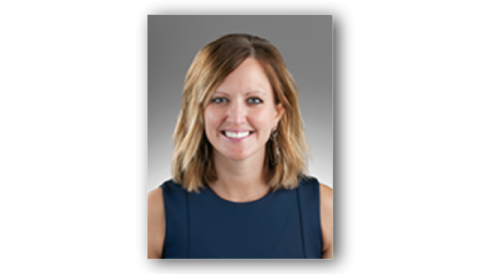Hard-to-Heal Wound Management: Real World Implementation of Community-Based Health Care Recommendations
September 30, 2024
Editor's Note: In this video interview, Emily Greenstein, APRN, CNP, CWON, FACCWS, shares key insights from her poster, "Hard-to-Heal Wound Management: Real World Implementation of Community-Based Health Care Recommendations," presented at the Symposium on Advanced Wound Care (SAWC) Fall in Las Vegas, NV, in October 2024.
© 2024 HMP Global. All Rights Reserved.
Transcript
Hello, my name is Emily Greenstein. I'm a certified wound and ostomy nurse practitioner at Essential Health in Fargo, North Dakota. The poster that I am going to be presenting at SAWC Fall is called "Hard-to-Heal Wound Management: Real World Implementation of Community-Based Health Care Recommendations." So this poster idea came from a manuscript that I was able to be part of. What it was is a consensus panel that met, and it was members from all over the world. They got together looking at problems in the community and how we can help them, how we can simplify things for our home health nurses, our bedside nurses, our community nurses. What can we do as wound care professionals that will help their jobs be a little bit easier?
So a little bit more of the background. So we all know that once a wound develops, these patients often present in the community. So either they are home nurses finding this, they're going to their primary care providers. They're not always seeing somebody who specializes in wound care right away. These wounds we know don't usually follow that normal healing trajectory. So that's why they started to be called hard-to-heal wounds. We also talked about how the term hard-to-heal wounds is starting to become more accepted versus the terminology of a chronic wound. And the reason behind that is because these wounds ultimately have the goal to heal. They just need a little extra help to get to that healing stage. Also, when we think of a chronic disease state, we often think of diseases such as congestive heart failure, diabetes, something that's managed but never actually goes away. So when we looked at the terminology, it was decided that we should be calling these hard-to-heal versus a chronic state.
The purpose of this whole panel, like I said, was to come up with ways to get easy diagrams, easy information out to these primary care providers, to those bedside nurses and community nurses. The methods that were used where we looked at first of all the very basics of wound care, so the wound bed prep, making sure that we're using acronyms such as the TIME, so we're treating that inflammation and that moisture management, that wound edge, and then also taking into consideration social aspects that these patients might be facing when they are in the community. The poster then goes through a couple of cases of patients that I treated in my rural clinic. So one of the nice things where I'm at, I do go to outreach to rural clinics. So these were patients that were treated there. So they maybe were seen by their primary care providers first or their home care nurses, and then were referred on.
For each of these patients, I did use the algorithm that we were presenting to the community nurses, and it just kind of goes through that. So looking at the tissue, the infection, moisture management, edge repair, regeneration, and the social determinants. So in this study or this snippet of cases of patients, you can see that all 3 patients with proper wound care did go on to heal fairly quickly. So the conclusion of this were that all 3 wounds were assessed and care plans were created based on the needs of the patients utilizing this algorithm that had been created. There was early recognition of the potential for the hard-to-heal wound and the patient-centric approach was used, and all of these patients have positive outcomes in the end. And it also showed us that this algorithm, which we had developed, can easily be used by anybody who is going to be encountering these hard-to-heal wounds.
So it's important, the one thing we wanted to drive home for these people was doing a complete assessment. So making sure you're looking at the total picture of the patient based on their comorbidities, the wound type, how long the wound had been there, are all signs that lead to this might potentially be a hard-to-heal wound. We know that in patients that have diabetes, oftentimes even a small blister or a small cut can become hard-to-heal due to that underlying comorbidity.
So when we met with everybody from different countries and discussed this, it was kind of interesting because even though we're in different countries, we all face kind of the same problems, the lack of resources. So oftentimes these people that are treating these wounds in the community, they don't get a lot of formal education on wound care. The turnover rate is really high. So they may have somebody who is really great at wounds, but then all of the sudden leaves. So making sure that we had something that was easily accessible for them, something that they could easily understand and translate into their day-to-day workflow was very important.
So future things that kind of plan in this area would be expanding the algorithms. How do we get them into the hands of the bedside people? Is it something that we need as far as a handout or a QR code? How do we educate these people or empower them more to take care of these patients? And also another thing was how do we get them to recognize when something is beyond them, when to refer onto a wound care specialist? The interesting thing about this whole process also was that we were looking at something that can be utilized worldwide. So looking at the hurdles that other wound care providers are facing in different countries.
The views and opinions expressed in this content are solely those of the contributor, and do not represent the views of WoundSource, HMP Global, its affiliates, or subsidiary companies.








